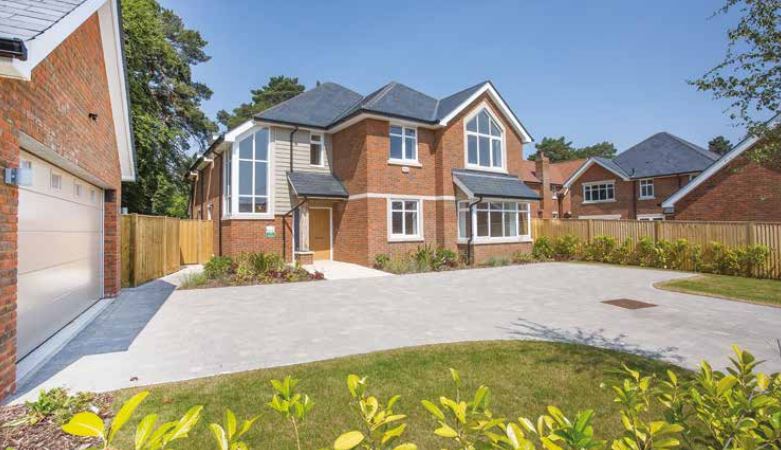 Dan Corcoran, Senior Buyer at Pennyfarthing Homes explains their ambitious plans for growth in the house building industry, how modern technologies like BIM and offsite construction are shaping the future of the construction industry and how using Keystone’s Hi-therm+ Lintel helped them to improve SAP ratings and eliminate the need for bolt on technologies.
Dan Corcoran, Senior Buyer at Pennyfarthing Homes explains their ambitious plans for growth in the house building industry, how modern technologies like BIM and offsite construction are shaping the future of the construction industry and how using Keystone’s Hi-therm+ Lintel helped them to improve SAP ratings and eliminate the need for bolt on technologies.
Ambitious growth is planned as New Forest Developer Pennyfarthing Homes aims to use its family values to latch onto demand on the South Coast.
Tell us a bit about Pennyfarthing Homes?
Pennyfarthing Homes is a family business with a strong reputation based on over 40 years of building homes to the absolute highest standards. For many years we focused purely on bespoke, high-end properties, ranging from £750k to £1m. But more recently we have expanded our activities to include larger sites with a range of standard house types. Local authorities certainly favour the construction of volume housing at the moment and our approach is now to buy larger sites, which enable us to build more houses but still retain the unique relationship with the customer that comes from being a family run business. Our land bank includes some prestige sites so we still have the ability to build further bespoke properties in the future.
 How has your business developed in recent years?
How has your business developed in recent years?
We have moved from building just 5-20 big houses each year to our current position where we will build around 100 houses and our turnover is around £50m. Over the next 3 years we plan to increase this number to 200 homes a year. This plan will reinforce our position as one of the leading regional house builders.
What are you doing to stand out from the competition?
Even though we are standardising things a little bit, we always want to give our houses a distinctive touch. Our designs include bays and different features on the elevations because we always want to try and stand out from other house builders. We believe the public can differentiate our builds from other house builders and realise that these subtle design features set us apart.
How is your relationship with the Keystone Group?
Well I’ve been here 3 years and it’s just got stronger and stronger really. I find Keystone very helpful and very responsive when required and they provide great customer service to our business.
How do you rate the Hi-therm Lintel?
 Pennyfarthing was one of the first to trial the Hi-therm Lintel and it’s been a great success. Hi-therm has impacted positively on our SAP ratings and eliminated the need for PV Panels and in some cases, we can eliminate other energy related systems which has resulted in overall cost savings for ourselves and also follows our ethos of ‘fabric first’. The fact that it is just part of the unseen fabric is great because from the customers’ point of view, it eliminates systems which would require maintenance and can be a hassle to operate. I realise some people may look at the price of Hi-therm on its own compared to a normal lintel and think ‘they seem expensive’, but you have to factor in the savings on things like PV panels on the roof etc. We are now converting to the Hi-therm+ Lintel which I think is actually a better design than the original Hi-therm. It’s obviously a cost saver to the business, which is great. We are also pleased with the Keylite Roof Windows which we recently trialled on a high spec development, with great results. We plan to specify these across the board on all future sites.
Pennyfarthing was one of the first to trial the Hi-therm Lintel and it’s been a great success. Hi-therm has impacted positively on our SAP ratings and eliminated the need for PV Panels and in some cases, we can eliminate other energy related systems which has resulted in overall cost savings for ourselves and also follows our ethos of ‘fabric first’. The fact that it is just part of the unseen fabric is great because from the customers’ point of view, it eliminates systems which would require maintenance and can be a hassle to operate. I realise some people may look at the price of Hi-therm on its own compared to a normal lintel and think ‘they seem expensive’, but you have to factor in the savings on things like PV panels on the roof etc. We are now converting to the Hi-therm+ Lintel which I think is actually a better design than the original Hi-therm. It’s obviously a cost saver to the business, which is great. We are also pleased with the Keylite Roof Windows which we recently trialled on a high spec development, with great results. We plan to specify these across the board on all future sites.
What way is technology and alternative construction methods changing the industry?
I think BIM is impacting design and generally streamlining everything, which helps because everyone wants everything quicker. Offsite seems to be growing rapidly, however we still do most of our work onsite. However, we have used Keystone’s Brick Slip Feature Lintels in the past and they were a pretty good product for us. I think also a lot of people are going back to timber frame now because it’s a lot quicker, you can get it straight up and get the roof on it in about 3 or 4 weeks. Modular construction also seems to be more and more popular.

